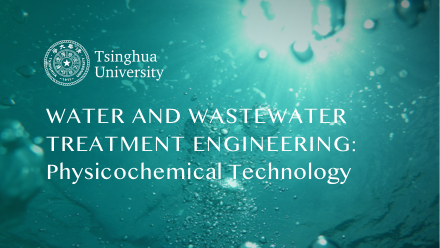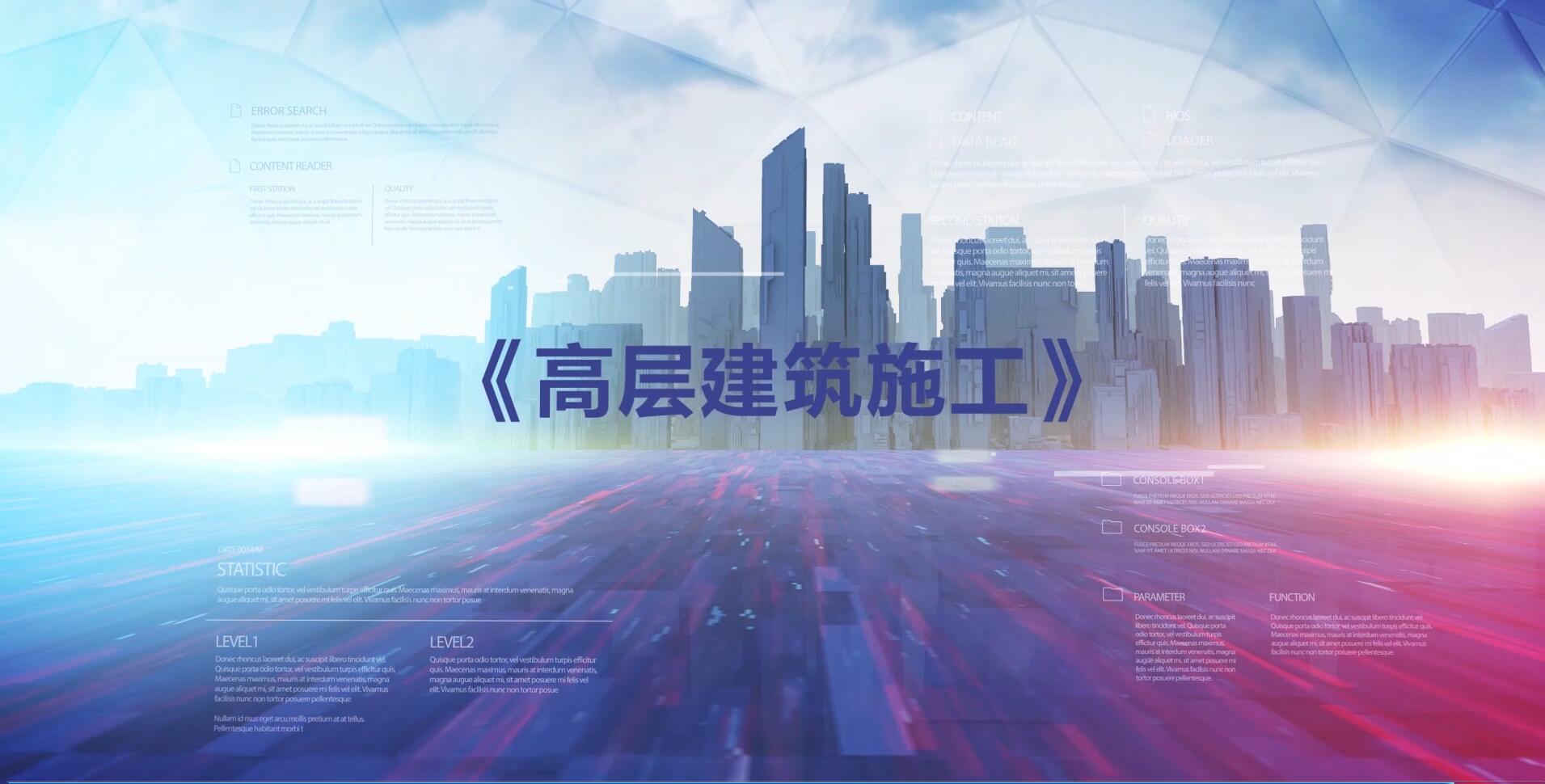
当前课程知识点:Water and Wastewater Treatment Engineering: Physicochemical Technology > Chapter 0 Introduction > 0-2 Water treatment process > 0-2 Water treatment process
返回《Water and Wastewater Treatment Engineering: Physicochemical Technology》慕课在线视频课程列表
返回《Water and Wastewater Treatment Engineering: Physicochemical Technology》慕课在线视频列表
同学们好,在这一讲给同学们介绍给水处理工艺
给水处理的原水是天然水体
天然水体分地下水和地表水
地表水包括江河、湖泊和水库等
以地表水为例,我们来看看
天然水体都具有什么性质
这是从某一河川取来的水样
大家可以看到看上去比较浑浊
如果该河川没有受到污染的话
通常含有泥沙、细菌、腐殖质、盐类等物质
这样的天然水体一般是不能满足我们生活、工业等用水的要求
因此,根据不同的用途,需要对原水进行处理
使之满足相应的水质标准,这就是给水处理工程
比如针对生活饮用,有生活饮用水的卫生标准
最新的饮用水标准是2006年颁布的,共106项
工业用水通常分工艺用水、锅炉用水、洗涤用水、冷却用水等
工业种类繁多,对其工艺用水的水质要求也不尽相同
需要参考相应的水质标准
比如《工业循环冷却水处理设计规范》中的循环冷却水水质标准
《低压锅炉水质标准》等
下面我们来看看要达到上述用水标准
通常需要采用什么样的处理工艺?
首先介绍水源水未受到污染的常规饮用水处理工艺
以地表水为水源时,采用的常规处理工艺流程如下
原水经混凝、沉淀、过滤、消毒后输配到管网,供给用户
"混凝"是向原水中投加混凝剂
使水中难以自然沉淀分离的
细小悬浮物和胶体颗粒相互碰撞并絮凝
形成大颗粒絮体
在"沉淀"过程中通过重力沉降作用
将混凝形成的大颗粒絮体从水中分离
也可以采用"澄清"代替"混凝"和"沉淀"
把这两个过程集中在一个装置中进行
"过滤"是利用粒状滤料截留经沉淀后水中残留的颗粒物
进一步降低浑浊度
"消毒"是最后一个单元
是指向水中投加消毒剂,比如液氯,来杀灭水中的病原微生物
该工艺的主要目的是去除水中的悬浮物、胶体以及病原微生物
以满足饮用水标准中对浊度、微生物浓度的要求
经常规工艺处理后
总大肠菌群、耐热大肠菌群、大肠埃希氏菌,100mL水样中不得检出
菌落总数小于100CFU/mL,浊度小于1个NTU
这是北京水源九厂的鸟瞰图
该厂采用常规的处理工艺
即原水经过澄清、过滤、消毒后输配到管网
以地下水为水源时
主要去除对象是水中可能存在的病原微生物
因此,如果不含有特殊有害物
原水只需要经过消毒处理,就可以达到生活饮用水水质标准
随着工业和城市的发展
越来越多的污染物随城市污水、工业废水、城市径流等进入水体
对水体造成不同程度的污染
受污染的饮用水源
除了原有的泥沙、胶体物质和病原微生物外
还会含有有机物、氨氮等污染物
原水仅仅通过常规处理工艺就不能达到生活饮用水水质标准
因此就需要对处理工艺进行改进
这就是微污染水源水的饮用水处理工艺
在微污染水源水饮用水处理工艺中
我们通常采用的措施是综合性的
首先在常规处理工艺基础上可以增加预处理
如生物预处理、预氧化或投加粉末活性炭等
第二是对常规处理工艺进行强化
如采用高效混凝剂、强化过滤等
第三是增加深度处理
如增加活性炭吸附、臭氧氧化或生物活性炭等措施
来提高微污染水的处理效果
此外我们国家有些地区的水源水具有特殊性质
需要开发一些特殊的饮用水处理工艺
比如在西北地区,以黄河为水源时
由于浊度较高,需要设置预沉淀单元
有些地区的地下水铁锰过高
需要设置除铁除锰单元
有些地区地下水硬度比较高,需要进行软化
对于富营养化湖泊水,需要强化藻类的去除等
下面介绍工业给水处理工艺
前面我们谈到,不同的行业有不同的用水需求
水质标准也不尽相同
但软化除盐通常是工业给水处理中最常见的工艺
软化除盐的主要工艺流程如这个图所示
过滤水经过阳离子和阴离子交换树脂处理后,就得到软化除盐水
给水处理因为直接涉及到我们生活和工农业的用水安全
处理水的安全性受到广泛关注
尤其是饮用水安全供给一直是水处理领域关注的重要课题
目前研究的热点包括微量有机物去除、病原微生物更有效的控制
消毒副产物控制、生物稳定性提高等等
希望通过我们的不断研究
能提供更有效的技术方法来解决这些问题
为我们的生活和工农业生产提供更安全可靠的用水
今天关于给水处理工艺就介绍到这儿
下一讲将介绍废水处理工艺,谢谢
-0-2 Water treatment process
-0-3 Wastewater treatment process
--0-3 Wastewater treatment process
-Chap 0 Homeworks
-1-1 Introduction
-1-2 Properties of colloids
-1-3 Mechanisms and process of coagulation and flocculation
--1-3 Mechanisms of coagulation and flocculation
-1-4 Coagulant and coagulant aids
-- 1-4 Coagulant and coagulant aids
-1-5 Kinetics of coagulation and flocculation
--1-5 Kinetics of coagulation and flocculation
-1-6 Factors affecting the coagulation performance
--1-6 Factors affecting the coagulation performance
-1-7 Facilities for coagulation and flocculation
--1-7 Facilities for coagulation and flocculation
-Chapter 1 Homeworks
-2-1 Introduction
-2-2 Discrete particle settling
--2-2 Discrete particle settling
-2-3 Flocculent settling
-2-4 Zone settling
-2-5 Rectangular settling tank
--2-5 Rectangular settling tanks
-2-6 Process calculation of rectangular settling tanks
--2-6 Process calculation of rectangular settling tanks
-2-7 Vertical Flow (up-flow ) and radial flow settling tank
--2-7 Vertical Flow (up-flow ) and radial flow settling tank
-2-8 Plated sedimentation tank
--2-8 Plated sedimentation tank
-2-9 Clarification pool
-3D interactive demonstration for settling tanks
-Chapter 2 Homework (part 1)
-Chapter 2 Homework (part 2)
-3-1 Introduction
-3-2 Theoretical foundation of air floatation
--3-2 Theoretical foundation of air floatation
-3-3 Pressurized dissolved air flotation
--3-3 Pressurized dissolved air flotation
-Chapter 3 Homework
-4-1 Introduction
-4-2 Structure and process of conventional rapid filter
--4-2 Structure and process of conventional rapid filter
-4-3 Water head loss of filter
--4-3 Water head loss of filter
-4-4 Filtration method of filter
--4-4 Filtration method of filter
-4-5 Filter media
-4-6 Water distribution system
--4-6 Water distribution system
-4-7 Filter backwashing
-4-8 Siphon filter
-4-9 Gravity valveless filter
--4-9 Gravity valveless filter
-4-10 Movable hood filter
-3D interactive demonstration for filtration tanks
--Usage and description for 3-D demonstration
-Chapter 4 Homework
-5-1 Introduction
-5-2 Influence factors of disinfection
--5-2 Influence factors of disinfection
-5-3 Chlorine disinfection
-5-4 Chlorine dioxide disinfection
--5-4 Chlorine dioxide disinfection
-5-5 Ultraviolet disinfection
--5-5 Ultraviolet disinfection
-Chapter 5 Homework
-6-1 Ion-exchange resin
-6-2 Properties of ion-exchange reactions
--6-2 Properties of ion-exchange reactions
-6-3 Properties of cation exchange resin
--6-3 Properties of cation exchange resin
-6-4 Properties of anion exchange resin
--6-4 Properties of anion exchange resin
-6-5 Softening system using ion exchange
--6-5 Softening system using ion exchange
-6-6 Desalination system using ion exchange
--6-6 Desalination system using ion exchange
-6-7 Ion-exchange equipment
-6-8 Treatment of industrial wastewater by ion-exchange method
--6-8 Treatment of industrial wastewater by ion-exchange method
-Chapter 6 Homework
-7-1 Introduction
-7-2 Principle and characteristics of electrodialysis
--7-2 Principle and characteristics of electrodialysis
-7-3 Configuration of electrodialysis unit
--7-3 Configuration of electrodialysis unit
-7-4 Operating parameters for electrodialysis unit
--7-4 Operating parameters for electrodialysis unit
-7-5 Principle and process of reverse osmosis
--7-5 Principle and process of reverse osmosis
-7-6 Operating parameters for reverse osmosis
--7-6 Operating parameters for reverse osmosis
-7-7 Principles and characteristics of UF and MF
--7-7 Principles and characteristics of UF and MF
-7-8 Design of ultrafiltration and microfiltration process
--7-8 Design of ultrafiltration and microfiltration process
-Chapter 7 Homework
-8-1 Fundamental knowledge and classification
--8-1 Fundamental knowledge and classification
-8-2 Ozonation
-8-3 Photo-catalytic oxidation
--8-3 Photo-catalytic oxidation
-8-4 Supercritical water oxidation
--8-4 Supercritical water oxidation
-8-5 Electrolysis
-Chapter 8 Homework
-9-1 Introduction
-9-2 Adsorption equilibrium and adsorption isotherm
--9-2 Adsorption equilibrium and adsorption isotherm
-9-3 Adsorption breakthrough curve
--9-3 Adsorption breakthrough curve
-Chapter 9 Homework

